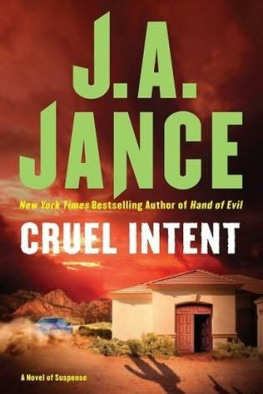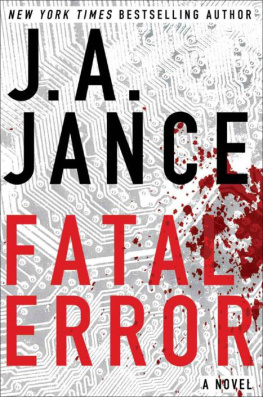Thank you for downloading this Simon & Schuster ebook. Get a FREE ebook when you join our mailing list. Plus, get updates on new releases, deals, recommended reads, and more from Simon & Schuster. Click below to sign up and see terms and conditions. CLICK HERE TO SIGN UP Already a subscriber? Provide your email again so we can register this ebook and send you more of what you like to read. You will continue to receive exclusive offers in your inbox. For Robert Hamilton, my favorite Bone Doc
PROLOGUE
ST. PAUL, MINNESOTA
Tuesday, October 31, 2017, 7:30 p.m. (CST)
A t seven thirty on Halloween evening, 2017, Danielle Lomax-Reardon was still at work. She felt guilty about not being home to see her two boys, Dan and Andy, head out for trick-or-treating in their carefully constructed Star Wars costumes, but she knew Luke would take an armload of pictures, ones the whole family would share while nibbling away at whatever goodies the boys collected in their jack-o-lantern-shaped buckets.
This was the job-versus-family tug-of-war every working mother had to fight on a daily basis, and on this occasion, Danielles work obligations had won out.
Hearing a murmur of voices coming from down the hall, she cleared her desk, left her private office, and made her way down the hall to the main conference room. It was a bare-bones kind of place furnished with nothing but a collection of mismatched chairs and a refreshment table, but Danielle knew it was a place of hope and new beginnings for many of the people who had ventured inside, and these Monday night support-group meetings were an integral part of the process.
This shabby gathering place had once been the posh front parlor for one of St. Pauls grand old mansions. Now it was the centerpiece of the Madeline Dahlke House, a shelterboth residential and drop-infor victims of domestic abuse, and named in honor of Sophie Dahlkes long-suffering mother. Outsiders might have been surprised to learn that the shelters executive director herself often facilitated this Monday night support-group meeting, but Danielle felt it was important to be there in person. When it came to domestic abuse, she, too, was a survivor.
The desperate women who finally ventured inside the shelter often felt trapped and hopeless, believing there was no way out. Many turned up in clothing meant to hide the bruises on their arms and legs and wearing layers of makeup designed to conceal the fading but still visible marks on their faces. Unfortunately, the rooms cheap fluorescent lighting usually undid their attempts at physical camouflage. For Danielle, who had once walked in their shoes, it was easy to see through their equally futile efforts at concealing the damage to their souls.
Several of Danielles clients had confided that, upon meeting her for the first time, they had almost turned and fled. To them it had seemed unlikely that the poised, stylishly dressed, confident woman reaching out in welcome would understand where they were coming from. How could she possibly have anything in common with their own horrific realities? Facilitating Monday night support-group meetings gave Danielle an opportunity to address those erroneous assumptions.
Not only had she once been a victim of domestic violence, so had her best friend. Alysha Morgan had suffered through months of unrelenting domestic abuse from her boyfriend, Zeke Woodward, in a relationship that had eventually ended in homicide. At the time, both Danielle and Alysha had been working as exotic dancers in a strip joint in Pasadena, California. Late one night an enraged Zeke had turned up in the parking lot and fired six close-range shots into Alyshas body. Danielle had been the sole eyewitness to that horrific event, and her presence that awful night had inevitably led her to the life she lived now and to her work at Dahlke House.
Sometimes, during group sharing, Danielle told her own story and sometimes she didnt. At the beginning of any given meeting she was never sure which way things would go, and that was the case that Monday evening as well.
As she entered the conference room, Danielle was greeted by a small burst of laughter from a group of women gathered around the refreshment table. Danielle regarded laughter as a good signit showed the beginnings of recovery, of people beginning to find ways to embark on paths to new lives. Three of the women at the refreshment table were Dahlke House graduates, ones who had spent six months or more in the shelters residential treatment program. Their continued participation in support-group meetings benefited their own recoveries but also offered encouragement to newcomers.
What was now Dahlke House had once been the fashionable residence of Henry Gottfried Peterson, a railroad baron considered to be one of the citys business titans. Outside the walls of their stately home, Henry and his wife, Madeline, had been greatly admired members of the citys high society. At home, Henry had been a monster, bullying and abusing both his wife and daughter, with his son, Alfred, eventually mimicking his fathers abusive behavior.
Sophie, the daughter, had grown up in that toxic family dynamic where what went on in public was the opposite of what went on at home. Determined to escape, she had married her high school sweetheart, Steven Philip Dahlke, weeks after they both graduated high school. Months later, Steven was shipped off to World War II, never to return. He perished in the Battle of the Bulge, as did Sophies brother.
By age twenty-three Sophie was a childless widow, living at home with her parents and doing what she could to protect her mother from her fathers increasingly angry outbursts and drunken rages. The abuse only ceased when he suffered a fatal stroke. By then Madeline was a shadow of her former self, living out the remainder of her life as a reclusive invalid. Sophie, living in a private suite of rooms inside the mansion, functioned as her mothers primary caregiver. After her mothers death in 1958, the stately home that had once belonged to her parents became Sophies alone.
In the early sixties, with the onset of the womens movement, Sophie learned to her surprise that many of her contemporaries, also members of the citys high society, had grown up in similarly challenging circumstances where the specter of physical violence lay hidden behind a thin veneer of wealth and respectability.
As the reality of their mutual histories gradually emerged, the women were shocked to realize that if their privileged mothers had been unable to exit abusive marriages, what chance did those less fortunate have? With that in mind, several of them banded together to do something about that very issue, offering support for abused women trapped in similar situations.
As a founding member of this fledgling organization, Sophie happily opened both her pocketbook and her home. While she continued to occupy her upstairs apartment, the ornate ground floor morphed into office space and public meeting rooms for women in need. When Sophie passed away in 1978, she left the mansion itself as well as the remainder of her fortune to the organization that now officially bore her mothers name. Over time, the mansion had been remodeled to include several residential units, and Dahlke House remained at the forefront in the battle against domestic abuse not only in St. Paul itself, but throughout the Twin Cities area.
As the organizations executive director, community outreach became Danielle Lomax-Reardons primary focus, and that was at the forefront of her mind when she entered the conference room that night, greeting attendees she recognized and introducing herself to first-timers.
One of those was a quiet-spoken Muslim woman dressed in traditional garb who seemed poised to flee at a moments notice. Seeing the womans sorrowful, downcast eyes, Danielle suspected there were black-and-blue marks hidden beneath her hijab and long-sleeved burka. Danielle went out of her way to greet the reticent newcomer and put her at ease.
Next page














